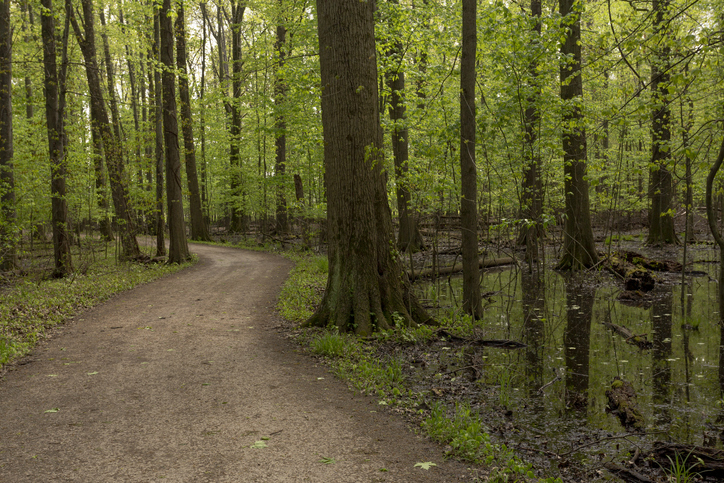Polluters Have No Home in Providence
"These environmental crimes are made worse by the close proximity of some of the most vulnerable communities in Rhode Island."
March 10, 2022
Providence’s “working waterfront” is the ugliest, dirtiest scene in the state of Rhode Island. Community members agree that it’s time to radically reimagine how Providence uses its over 100 acres of frontage on the upper Narragansett Bay.
The nature of the business conducted on the waterfront today is irreconcilable with an authentic climate-justice policy. Off-gassing from valves and storage tanks and emissions from diesel engines in trucks, trains, and ships make even an accident-free day a deleterious one. The entire site is beyond the hurricane barrier and vulnerable to rising sea levels and storm surges, rendering the upper Narragansett Bay vulnerable to ecological disaster. When we eventually experience an adverse weather event that is powerful enough to spill waterfront-stored products, the bay will be contaminated with a toxic mix of metal refuse, home heating oil, jet and diesel fuel, natural gas, and other chemicals, and the neighbors most affected will be vulnerable frontline communities.
Waterfront businesses are not good city partners. Waterfront tenant Rhode Island Recycled Metals routinely flouts Rhode Island Department of Environmental Management regulations, failing to acquire permits to operate a scrapyard on a Superfund site laden with toxins and carcinogens beneath the soil cap. Sprague Energy repeatedly fails to prevent its asphalt storage tanks from emitting noxious gases and potentially volatile organic compounds (VOCs) into the surrounding community.
Additionally, Sims Metal Management was assessed the largest penalty ever assessed by the state for violations of the Clean Air Act, after it was found guilty of shredding automobiles and allowing the plastics, rubber, and other carcinogenic materials to emanate from its Johnston facility into the lungs of its employees and neighbors. Sims operates facilities both in Johnston and on the Providence waterfront.
These environmental crimes are made worse by the close proximity of some of the most vulnerable communities in Rhode Island. The industrial nature of the area is literally choking its neighbors, with South Providence having some of the highest concentrations of airborne diesel particulate matter in the state, in addition to the highest per capita population of asthmatic youth in Rhode Island, according to RIDOH data. Any political leader who endorses the continued function of Providence’s waterfront unaltered also accepts the environmental racism that takes place there every day.
Also, before they go, polluters need to be held accountable for the mess that they have made during their operation. We can’t afford to clean up after polluters tomorrow who know full well the damage they are causing today.
Cities on lakes and oceans across America are waking up to the reality that their waterfronts are their most valuable assets. After burying a highway and restoring connection with downtown, Boston’s Seaport District went from a vast wasteland of abandoned wharves and parking lots to one of the top residential parts of Boston, a hot spot for Fortune 500 companies and startups, and a top destination for global travelers. Milwaukee reimagined its 75-acre underutilized waterfront property into a successful festival park, with the main summer event driving over 831,769 visitors — think 79 percent of Rhode Island’s population — to the space in 2017. There’s no reason to think that reconceiving the Providence waterfront will come at an economic cost: done correctly, it will come with great gains.
I understand that waterfront businesses support local jobs. Workers displaced by the relocation of polluting businesses should be connected to similar employment at the rapidly expanding Port of Davisville, which runs on 100 percent renewable energy and is only 20 minutes to the south, or elsewhere in Rhode Island’s burgeoning manufacturing sector.
Providence has officially codified the goal of achieving carbon neutrality by 2050. Unfortunately, the truth remains that we cannot only build solar panels and wind turbines to achieve this goal. We cannot permit waterfront polluters to operate and expand, and we cannot permit our leaders to choose political expediency and profit-driven shortsightedness over transformational policy. We must act decisively to reclaim Providence’s waterfront from a handful of dirty companies for the benefit of all that live here.
Providence needs leaders who both understand the urgent need for climate justice and have the political courage to advocate for it. Until then, Providence’s waterfront solutions will be locked away, buried under a pile of shredded cars and rusty metal.
Bradly J. VanDerStad is a Providence City Council candidate.




What about the waterfront near the pedestrian bridge complete with 3 big ugly smokestacks between the Point Street and Providence River bridges and the neighborhoods and expected neighborhoods here?
Allens Avenue, and the waterfront , has long been neglected . The bad policys of zoning and poluting businesses have overwhelmed the residens of Providence and who live near by with toxic air, traveling dust, and fowl odors, for far too long.
It is time to re access all policys and remove the ‘offenders’ and take a deep look at the entire area thru a ‘green lense’ .